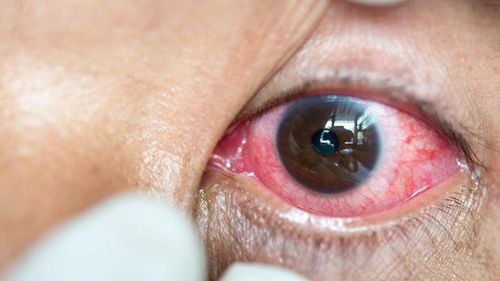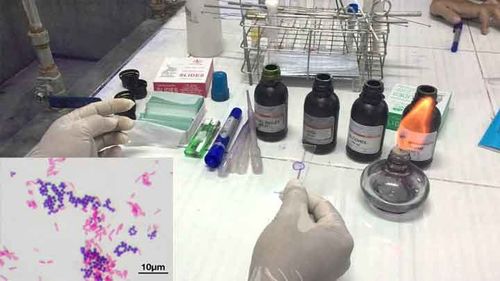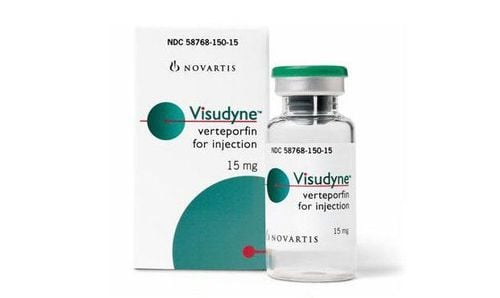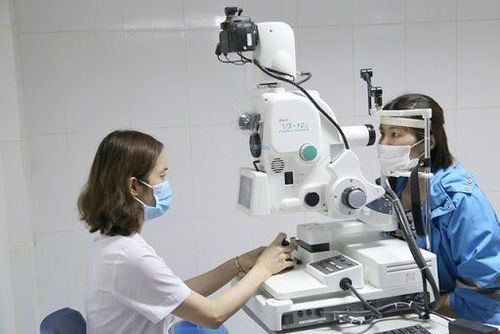This is an automatically translated article.
Endophthalmitis is a serious eye infection whose recovery prognosis is highly dependent on the timing of diagnosis along with appropriate treatment. Endophthalmitis is often caused by pathogens such as bacteria and fungi that can enter the eye by a direct route through the damaged eye.1. Characteristics of endophthalmitis
Endophthalmitis describes severe inflammation in the tissues that line the inside of the eye. Endophthalmitis is usually caused by a bacterial infection of the eye, such as staphylococci, streptococcus, or Gram-negative bacteria, or pathogenic fungi such as Candida and aspergillus. Endophthalmitis, caused by gram-negative microorganisms, is generally more virulent and has a worse prognosis. However, rare cases of endophthalmitis are usually caused by fungi and protozoa.Noninfectious endophthalmitis, which may be caused by a reaction to glass fragments left in the eye after cataract surgery or an injection into the eye. Endophthalmitis is rare, with an average annual incidence of about 5 per 100,000, and the right eye is twice as likely to be infected as the left eye. It may be explained by the right eye near the artery, which supplies blood from the right carotid artery.
2. Pathogenesis of endophthalmitis
Under normal conditions, the blood barrier in the eye plays an important role as a natural barrier to help prevent or fight pathogens capable of entering the eye. When the body is infected, it can be a favorable factor to create infection foci in other locations in the body such as sinusitis in the nose, urinary tract infection, dermatitis ... These agents can pathogens from these sites on the body and then into the bloodstream and then into the eyes. From here, the above factors will start to cause inflammation in the intraocular tissues in response to the invasion of these pathogens, which destroys the vitreous component of the retina, choroid, causing this condition. internal inflammation.
Viêm nội nhãn do máu từ vị trí nhiễm trùng khác đi vào mắt
In addition, substandard treatment methods can also contribute to factors affecting endophthalmitis, such as the use of infusions that can facilitate endophthalmitis. development label.
3. Symptoms of endophthalmitis
Subjective symptoms of endophthalmitis may appear signs of vision such as blurred vision, pain, and pain that will gradually increase at night, irritated eyes causing discomfort for patients. . In addition, patients may experience additional symptoms of headache, nausea, photophobia, swelling around the eyes, or may appear pink eye.Objective symptoms of endophthalmitis show that when going to the eye examination, there will be cases of eyelid swelling, redness, conjunctiva, edema, corneal edema even infiltrated, purulent anterior chamber, vitreous inflammation.
Systemic symptoms, purulent endophthalmitis often makes patients feel tired, feverish, insomnia, poor appetite. However, patients with early-stage endophthalmitis can often progress insidiously without pain or pus.
4. Diagnosis of endophthalmitis
Microbiological evaluation may be based on gram staining and cultures of intraocular specimens, blood, and urine.To diagnose suspected cases of endophthalmitis at particular risk those who have had past eye surgery or eye damage. Gram stain with cultures of specimens from anterior chamber and vitreous is considered the gold standard for effective diagnosis. Patients with suspected endophthalmitis should also have blood and urine cultures to supplement the diagnosis.

Viêm nội nhãn có thể được chẩn đoán sau khi xét nghiệm vi sinh
5. Treatment of endophthalmitis
Endophthalmitis can lead to serious problems with both vision and the whole body, so it should be diagnosed and treated by a specialist.The doctor can review the medical history, examine and check the condition along with the internal ophthalmoscopy or can apply the ultrasound method... From there the doctor has a basis to make a plan. Treatment regimens and will depend on: the cause of the endophthalmitis, vision in the infected eye. In addition, the doctor will apply treatment methods such as: using intraocular antibiotics, for endogenous endophthalmitis can use intravenous and intraocular antibiotics, in more severe cases, vitrectomy and intraocular corticosteroids can be used.
Initial treatment that the doctor may perform includes the use of broad-spectrum antibiotics by the intraocular route, most commonly vancomycin and ceftazidime. Patients with endophthalmitis may require both intraocular and intravenous antibiotics. The course of treatment for endophthalmitis can vary based on bacterial and fungal culture results and their sensitivity.
Poor vision prognosis often occurs even with early and appropriate treatment in cases of endophthalmitis. Patients with finger-counting vision or worse at presentation should consider the indication for vitrectomy and the use of corticosteroids to treat endophthalmitis. However, with fungal endophthalmitis, corticosteroids may be contraindicated.
Currently, Eye Specialist - Vinmec International General Hospital is the address for examination, treatment and prevention of eye diseases including endophthalmitis. When performing the examination process at Vinmec, customers will be welcomed and used modern facilities and machinery along with perfect medical services under the guidance and advice of doctors. well-trained doctors, both at home and abroad.
Please dial HOTLINE for more information or register for an appointment HERE. Download MyVinmec app to make appointments faster and to manage your bookings easily.













